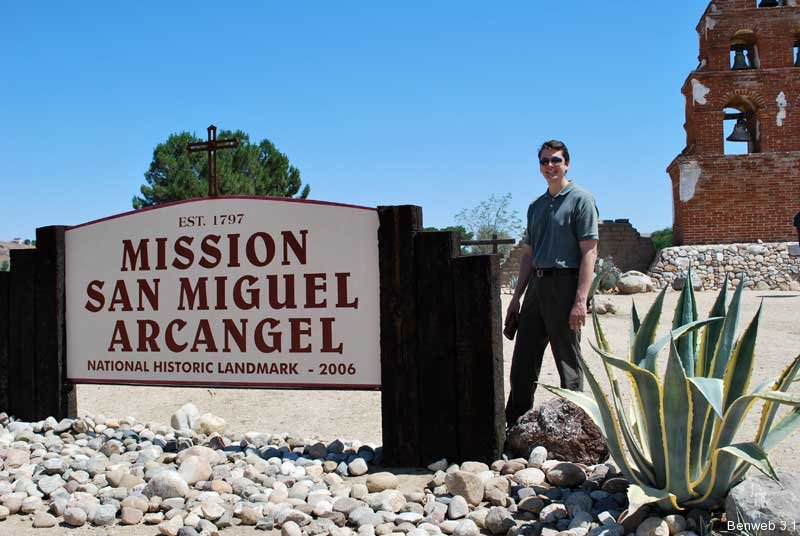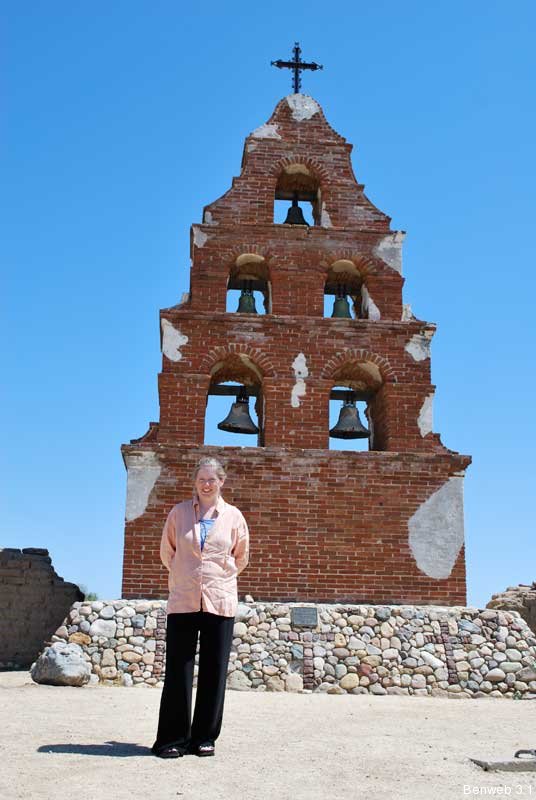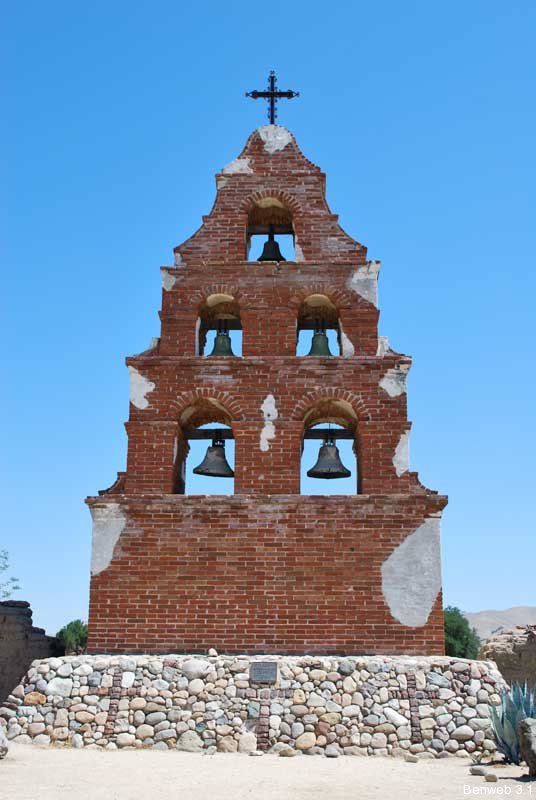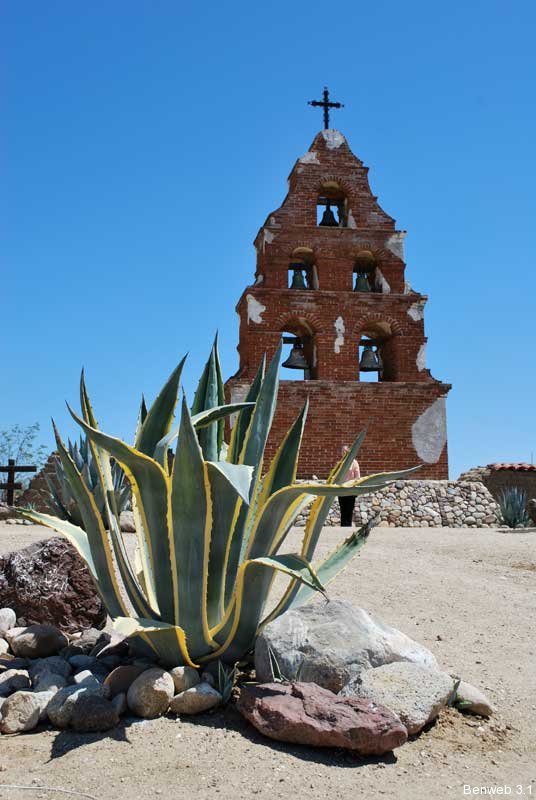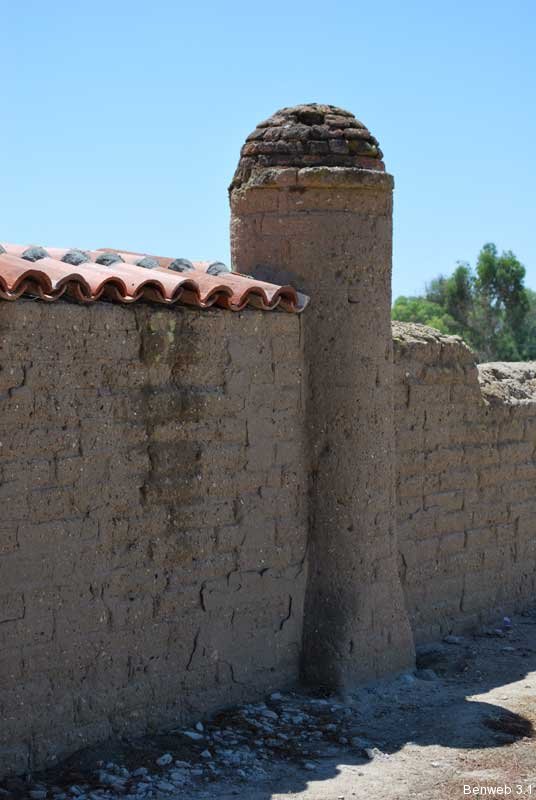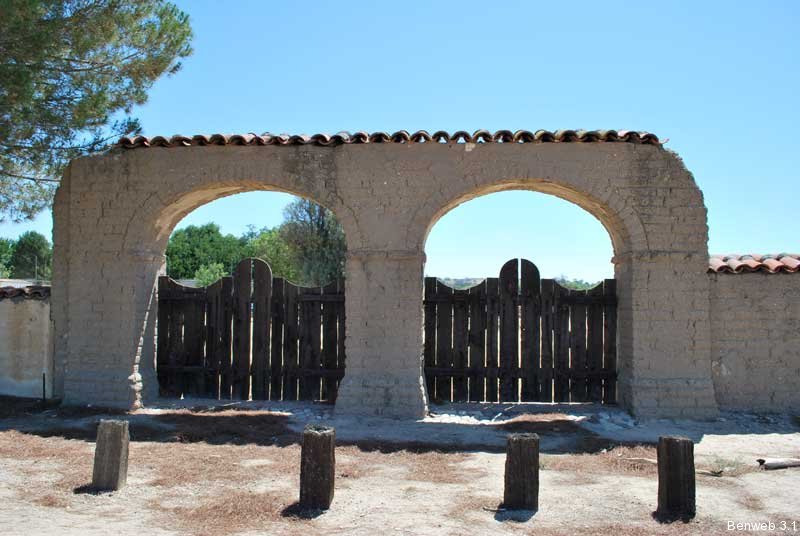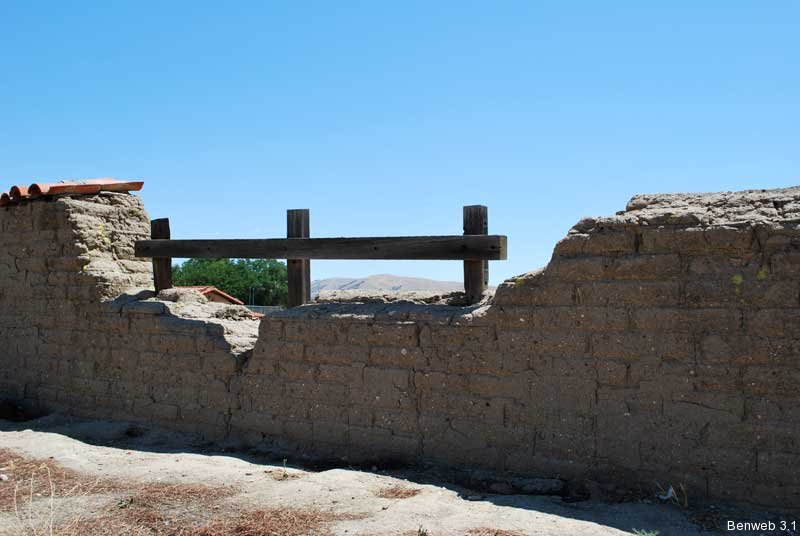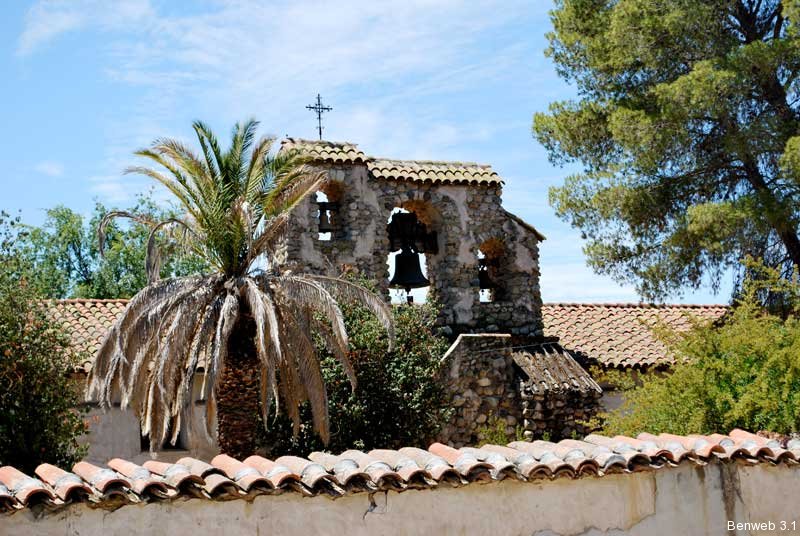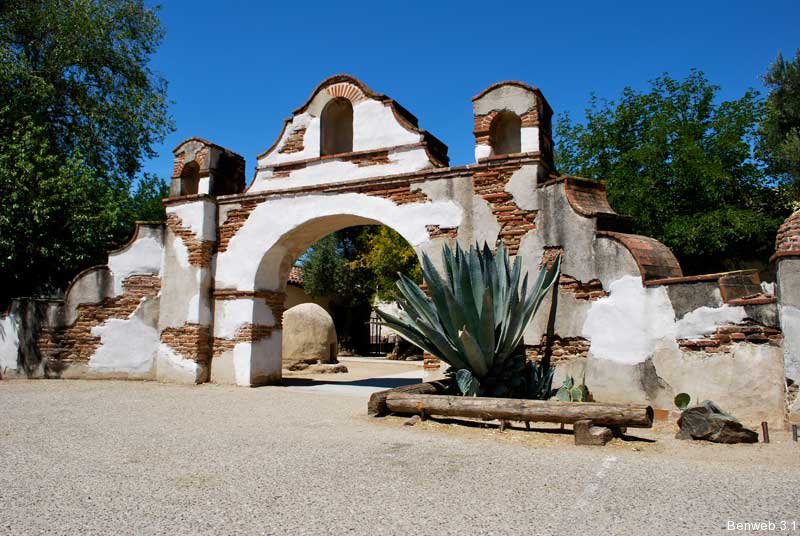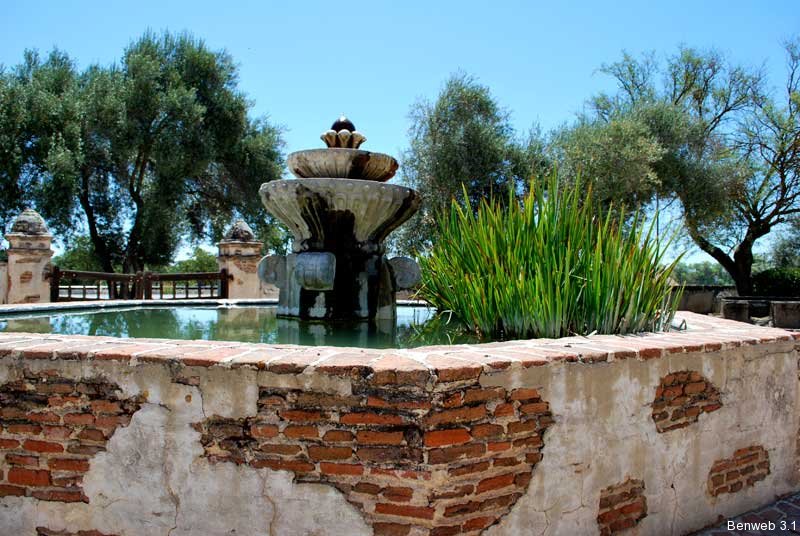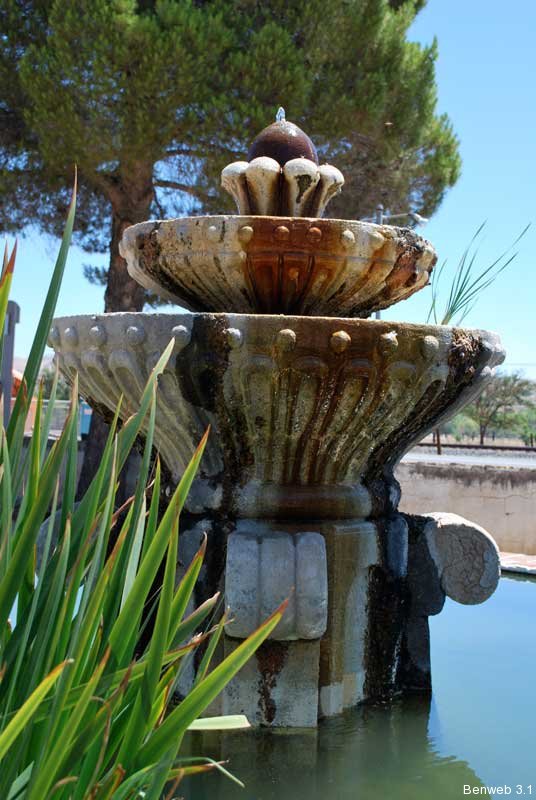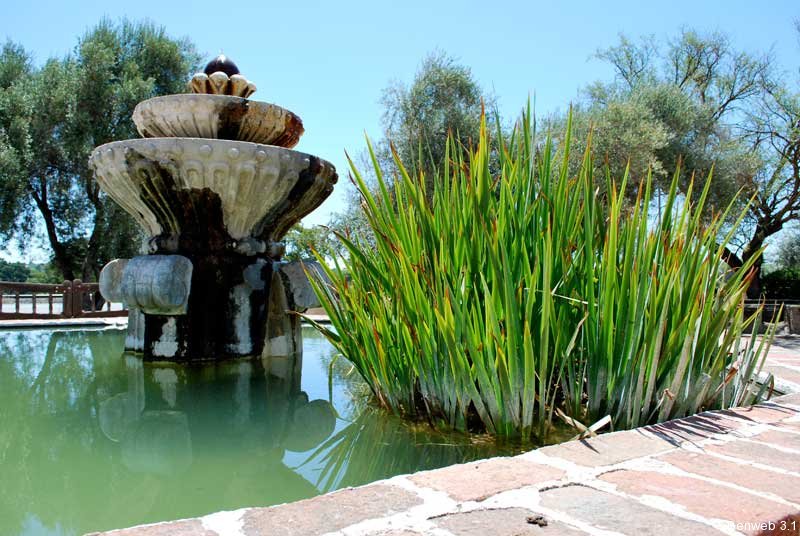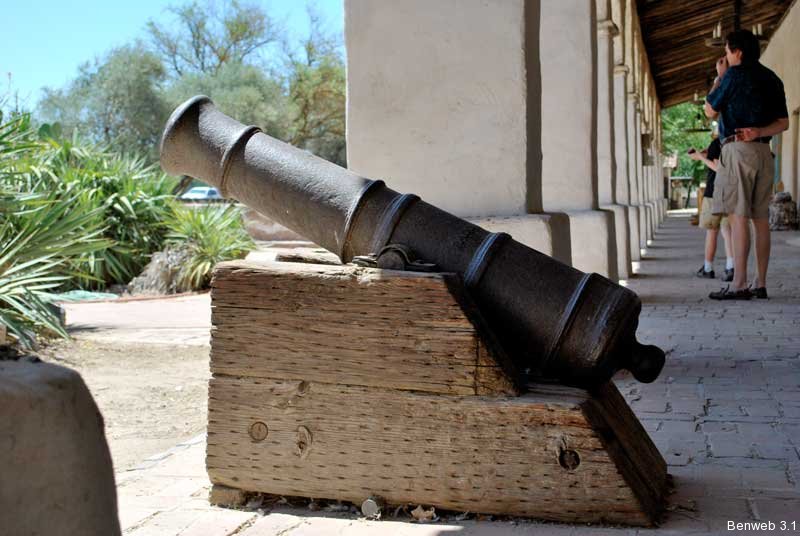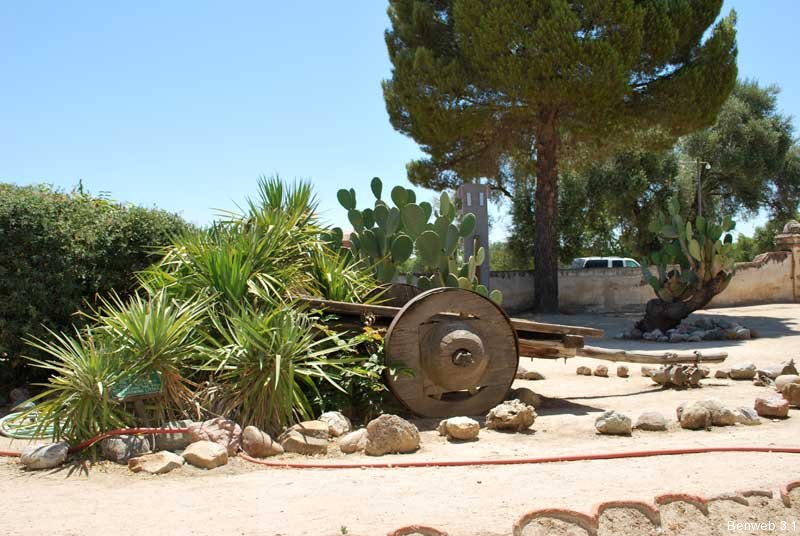Mission Arcangel San Miguel was the 16th of the 21 missions founded by the order of the Franciscans in Alta California (as opposed to Baja California). Father Junipero Serra founded the first group of missions, starting with the San Diego mission in 1769; the last one, San Francisco Solano, was founded in 1823. This mission, founded by Father President Fermin de Lasuen on July 25, 1797, is located in the small town of San Miguel, north of Paso Robles, north of Atascadero, right along Highway 101:
View Larger Map
Founded in 1797, burned down in 1806, and rebuilt by 1821, the mission was recognized as a national historic landmark in 2007. (Only 7 of the 21 missions have this designation, so it’s really something to be proud of.) The building and grounds are surrounded by a low adobe wall that was restored in the 20th century. There is a large belltower visible from the freeway; don’t be fooled. It’s not really part of the mission proper. It’s actually a memorial erected in the 1950s to a WWII veteran from the area.
What remains of the original mission is currently being retrofitted to withstand the seismic activity that is so frequent in the area. (Remember the San Simeon quake of December 22, 2003? No? The USGS sure does, and so do those who oversee the Mission, which is currently being restored and retrofitted.)
Apparently the interior of the mission is original and untouched. According to one website (actually, several websites reproduce this quote exactly, but this one seems to be official, despite the aesthetically unpleasing design,
Mission San Miguel has the only church in which the paintings and decorations have never been retouched by subsequent artists. The view presented to the visitor, except for the modern luxury of bench pews, is exactly the same as that seen by the Indian converts. In its museum, a great deal of effort has been made to present the tools used in mission industries: a spinning wheel and loom, a beehive oven, fishtraps, branding irons, forging tools, and a tile kiln which is still in operation. One of the most interesting of the exhibits is a “mission window” of the type used before the padres obtained glass. It is a wooden frame, over which cowhide is stretched very thinly, then shaved and greased to increase its translucence. These frames were pegged into the window openings during periods of cold or inclement weather.
It could be true, for all we know. The portions of the mission that were accessible to the public on the day we visited were the courtyard and the gift shop. And with a 13-year-old and a 9-year-old in tow, that’s about all we really had time to see, anyway.
After a quick tour of the grounds, it was off across the street to our next post, the Adobe Rios-Caledonia.
Related Images:
no images were found

